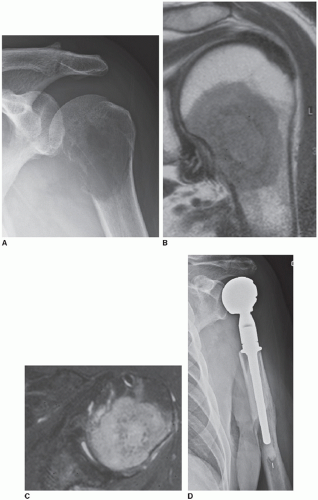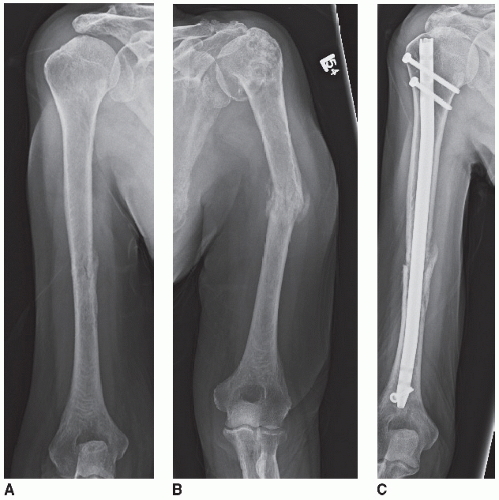General Considerations
Kristy L. Weber
The shoulder is a relatively common location for tumor resections that involve limb-sparing operations for primary bone sarcomas as well as metastatic disease. The complex anatomy about the shoulder girdle and the need to maintain maximal function for the patient to perform activities of daily living underscore the importance of a thorough understanding of the issues related to complex surgery in this area. The options for reconstruction of the humerus and shoulder girdle after tumor resection are varied and explained in detail in the following chapters.
INDICATIONS
Resection
Primary bone/soft tissue sarcomas or occasionally isolated bone metastasis that involve the humerus or scapula without involvement of the main neurovascular bundle are indicated for wide resection with goals to achieve lasting local control and potentially increase the patient’s survival (Figs. 26.1 and 26.2).
Widespread metastatic bone disease with a pathologic fracture of the humerus that is not amenable to internal fixation is often indicated for resection. The goal is to achieve pain relief rather than local control, thus a wide resection is often not necessary. If an intralesional or marginal resection is performed, postoperative external beam radiation is used (Fig. 26.3).
Stay updated, free articles. Join our Telegram channel

Full access? Get Clinical Tree












